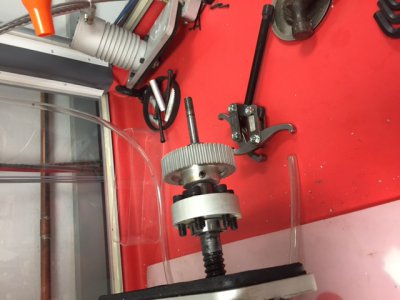- Joined
- Jun 14, 2015
- Messages
- 13
I'm going to wade in with my first post. I have converted my RF45 to CNC. I've been creating designs with Visual CAD/CAM and cutting them out successfully with Mach3. I'm now working on eliminating backlash in the mechanism. The x-axis has 25 mils of backlash. I've implemented ball screws and there's no backlash I can detect in the nut. I see all the backlash in the thrust bearing assembly. I can reduce this backlash by tightening down the cap that compresses the bearing assembly, but if I get it too tight, the x axis won't move at all. That doesn't seem right. Note that I've attached a pic that shows the assembly I'm dealing with. I'd like to hear from anyone who has experience with this. rex



